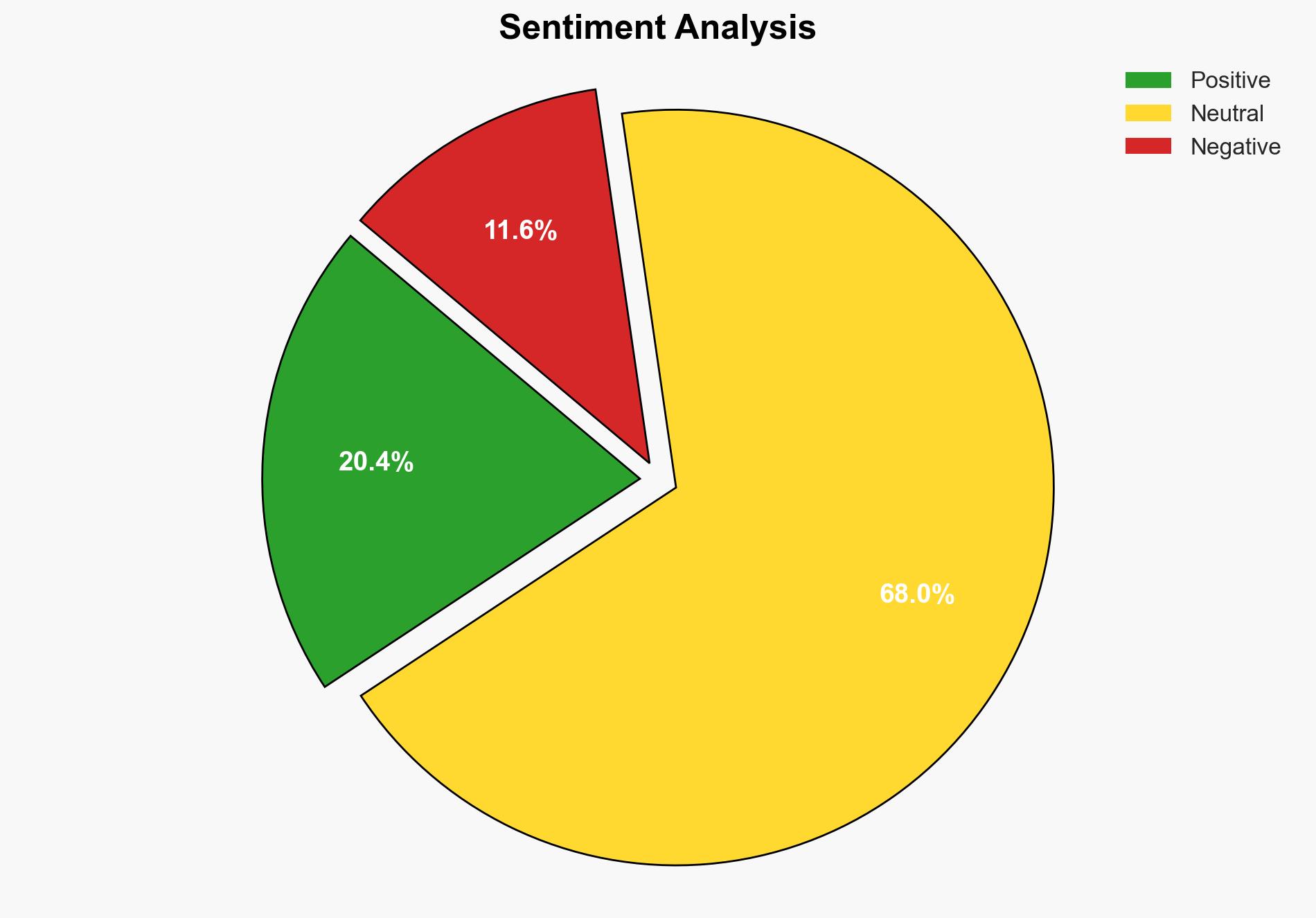The first ESU update for Windows 10 arrives Heres whats inside – PCWorld
Published on: 2025-11-13
AI-powered OSINT brief from verified open sources. Automated NLP signal extraction with human verification. See our Methodology and Why WorldWideWatchers.
Intelligence Report: The first ESU update for Windows 10 arrives – Here’s what’s inside – PCWorld
1. BLUF (Bottom Line Up Front)
Microsoft’s release of the Extended Security Update (ESU) for Windows 10 is a strategic move to maintain cybersecurity integrity for users beyond the official support end date. The most supported hypothesis is that this update aims to protect users from critical vulnerabilities, including zero-day exploits, while transitioning them to newer systems. Confidence Level: Moderate. Recommended action is to encourage organizations to enroll in the ESU program to mitigate cybersecurity risks.
2. Competing Hypotheses
Hypothesis 1: Microsoft is extending security updates for Windows 10 to protect users from critical vulnerabilities and ensure a smooth transition to newer operating systems.
Hypothesis 2: The ESU program is primarily a revenue-generating strategy for Microsoft, leveraging the necessity of security updates to encourage continued user engagement with legacy systems.
Hypothesis 1 is more likely due to the emphasis on addressing actively exploited vulnerabilities and the strategic importance of maintaining user trust in Microsoft’s security capabilities.
3. Key Assumptions and Red Flags
Assumptions: It is assumed that Microsoft has the technical capability to effectively address all critical vulnerabilities through the ESU program. It is also assumed that users will prioritize security over cost when deciding to enroll in the ESU program.
Red Flags: Potential over-reliance on ESU could delay necessary upgrades to newer, more secure systems. Additionally, the absence of new features in ESU updates might lead to user dissatisfaction.
4. Implications and Strategic Risks
The continuation of security updates through the ESU program mitigates immediate cybersecurity threats but may inadvertently prolong the lifecycle of outdated systems, increasing long-term vulnerability. Politically, this move could be seen as a commitment to user security, but economically, it may strain organizations with limited IT budgets. Cyber risks remain if users fail to transition to more secure systems post-ESU program.
5. Recommendations and Outlook
- Encourage organizations to enroll in the ESU program to ensure continued protection against critical vulnerabilities.
- Advise users to plan for transitioning to newer operating systems to maintain long-term cybersecurity.
- Best Scenario: Users transition smoothly to newer systems post-ESU, maintaining robust cybersecurity.
- Worst Scenario: Users rely solely on ESU, leading to increased vulnerability as systems become outdated.
- Most-likely Scenario: A mixed approach where some users transition while others continue with ESU, balancing immediate security with long-term planning.
6. Key Individuals and Entities
Microsoft (entity responsible for the ESU program and updates).
7. Thematic Tags
Cybersecurity, Software Updates, Microsoft, Windows 10, Extended Security Update (ESU)
Structured Analytic Techniques Applied
- Adversarial Threat Simulation: Model and simulate actions of cyber adversaries to anticipate vulnerabilities and improve resilience.
- Indicators Development: Detect and monitor behavioral or technical anomalies across systems for early threat detection.
- Bayesian Scenario Modeling: Quantify uncertainty and predict cyberattack pathways using probabilistic inference.
Explore more:
Cybersecurity Briefs ·
Daily Summary ·
Methodology





